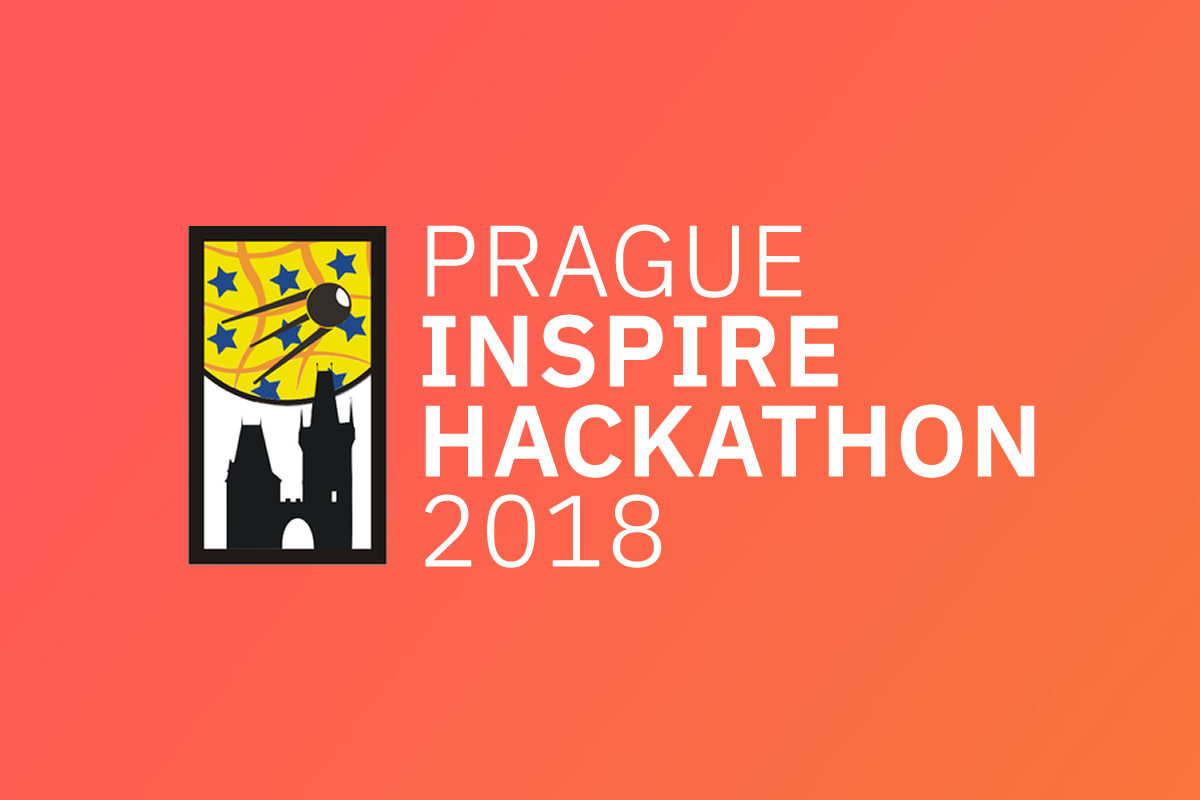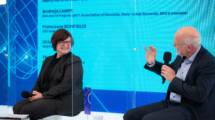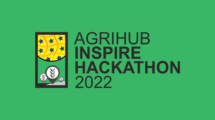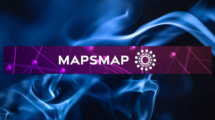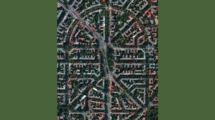Směrnice INSPIRE žije a koncem ledna 2018 se můžete zapojit do dvoudenního hackathonu.
Hackathon se jmenuje „Moving Big and Open Data and Open Source into Practice (Agriculture, areal planning, biodiversity, climate change adaptation, water-energy-food nexus, transport, logistic)“ a konat se bude ve dnech 23. – 24. ledna 2018 v Praze.
Organizátoři očekávají zahraniční týmy, proto jsou veškeré informace v angličtině. Do hackathonu se samozřejmě mohou zapojit i české a slovenské týmy.
What
We would like invite you to join us in Prague and try together with others demonstrate possibilities of use of Big and Open Data and Open Source in real life application focused mainly on rural regions.
Why
Today’s society relies on an easy, reliable and quick access to environmental information in order to manage challenges such as sustainable development, urbanization, climate change, and disaster risk. This information is provided by various organisations and initiatives. Both the public and private sectors thus produce and publish data and information covering the needs within areas such as agriculture, forestry, fishery, environmental protection, landscape planning and natural risks and hazards management. People engaged in local community activities are able to capture local knowledge with the use of multimedia such as videos, photos and different kinds of sensor data. The collected information can contribute to tackle environmental and societal challenges in food production, forestry, fishery, risk management, air, soil and water pollution and contamination, landscape management, education and commercialisation.
Needless to say, data and information varies in quality, have different formats, granularity, time resolution and so on. With the advent of satellite technology, web, and mobile technology, we are producing vast amount of data often described as big data.
Volunteered geographic information (VGI) is the harnessing of tools to create, assemble, and disseminate geographic data provided voluntarily by individuals. Recent developments in the sensor domain have led to a DIY (Do It Yourself) approach, using sensors based on low cost hardware, as well as an increasing availability of Bluetooth connected sensors that can be easily connected to a smartphone and together with existing smartphone sensors provide a large amount of spatio-temporal sensor data. Citizen observatories are community-based environmental monitoring and information systems. They build on innovative and novel Earth observation applications embedded in portable or mobile personal devices. This means that citizens can help and be engaged in observing our environment. Young generation representing smartphone users is one of the enablers of new geographic information based applications. Spatial information helps young generations to learn about relations to and with the environment, history and culture in different regions.
Online sharing of spatial information goes beyond the linguistic barriers, which are one of the most important constraints for the communication between different regions. The open data movement covers many issues of using existing data sets without any limits or restrictions. Open data activities mean open-source, open-content and open-access. Open data sets are often provided by governmental bodies, but also by scientists or international organisations and bodies (e.g. European Commission, World Bank, Copernicus, Group of Earth Observations).
PARTICIPATION
The main objective of the Prague INSPIRE Hack is to create a meeting place for professionals, regional and national project team members including students, start-ups, freelancers, current and future users and investors to move scientific results into practice. The focus will be on Big Open Data:
- Earth Observation
- Sensors data
- VGI data
- GNSS technologies
- Linked Open Data
applied in the agriculture and rural development sectors. The first phase of the Prague INSPIRE Hack starts with creating teams connecting different types of stakeholders. You are invited to create your own team with people you know or people you’ve worked with before. Or, you can explore the existing ideas and teams that have been already created and you can simply join them. In any case, you need to register in order to gain access to the shared space where team building and design of ideas is happening. The team building will start already before Prague INSPIRE Hack using online and offline communication tools
How
For participation, please register at https://goo.gl/forms/GfJrnhAldqwO5avi1
As soon as you register, you will be sent a link to the shared collaboration space. In this space you will be able to join the already existing teams and projects or you can create your own team and project idea. Please, keep the shared space up-to-date and share the basic information about your team and project idea as well as your contact information and means of communication. The workspace will be accompanied by data and tools, which are available in preliminary versions, listed at the end of this page/document. We will offer introduction webinars and other supporting material
Where
The Prague INSPIRE Hack is an INSPIRE Hackathon. These hackathons start with virtual meetings and activities some weeks before a face-to-face meeting ends the hacking process. The awards ceremony concludes the hackathon. The Prague INSPIRE Hack starts by forming teams and suggesting ideas on a dedicated space made available after registration the 15th December 2017.
The face-to-face segment of the Prague INSPIRE Hack 2018 will take place at Faculty of Economics and Management Czech University of Life Sciences Prague (https://www.pef.czu.cz/en/ ), Kamýcká 129, Praha Suchdol, Czech Republic on 23rd and 24th January 2018.
Accommodation options
Hotel Galaxie – about 700 meters from the meeting place
https://www.hotelgalaxie.cz/en/contact
Dormitory at the campus
https://www.kam.czu.cz/en/r-10440-accommodation/r-10459-dormitory-jih
AWARDS
Student Award
The Prague INSPIRE Hack offers a financial award (400 Euro) for the two best applications developed by students using one or more of the new tools: HSLayers NG, DAP, Mobile HSLayers NG or SensLog or by using at least one of the data sets from: Smart Point of Interests, Open Land Use, Open Transport Map.
Prague INSPIRE Hack Awards
The best three projects from other applicants will be selected by the jury that will be formed during January 2018 and the winning teams will be awarded. This includes a live broadcast on social media, an interview (video/audio) with the winning team that they can use freely and that will be published in specified channels. The most creative use of a combination of INSPIRE compliant open data including space-based, in-situ, and citizen science/crowdsourced data will be awarded the INSPIRE Hackathon Award.
EO ClimLab Award
The best project design innovative service or product derived from EO data to solve the societal challenges that appeared due to climate change influence, will be awarded the EO ClimLab Award.
Parallel Training Workshop
During Prague-Hack will run series of training workshops, which will help to developers, but which will be also accessible for external communities. This Workshop will be two hours block, where mentors will practically explain, how to use certain tools, data or some specifications. The potential l workshops will be published in next days
Important dates
| 15 December 2017 | Start of the registration |
| 15 December 2017 – 22 of January 2018 | Building teams for hackathon projects |
| 22 January 2018 | Deadline for team registration online. additional teams could be established during the hack |
| 23 January 9 00 | Opening of Hack |
| 9 15 – 10 00 | Ideas pitches |
| 10 00 – 12 00 | Team building |
| 12 00 – 18 00 | Hacking |
| 12 00 – 18 00 | Parallel workshops |
| 24 January 9 00 – 14 00 | Hacking |
| 09 00 – 15 00 | Parallel training workshops |
| 14 00 – 15 00 | Presentation of results |
| 15 00 – 15 30 | Jury decision |
| 15 40 – 17 00 | Final ceremony with a glass of wine |
Workshops
In the frame of the Prague INSPIRE Hackathon, several workshops will be organised. The following workshops are currently foreseen:
- Tuesday 23 Jan 2018, 15:00 – 16:30 Karel Charvat will organise workshop on the theme: “Horizon 2020 as an opportunity to elaborate your ideas”, which will be focused on open and coming calls (2018 and 2019) related to subject of Hackathon. It will be connected with small networking and anybody, who is interested could provide also 3 minutes presentation of ideas or partner search
- Wednesday 24 Jan2018, 10:00 – 11:00 Tomas Reznik will organise a workshop “Metadata without showing a specialized metadata platform: GeoDCAT and other (meta)data semantic approaches“
Participation at workshops is free and open also for people not taking directly part in the hacking activities. Registration is however required at https://goo.gl/forms/GfJrnhAldqwO5avi1.
Contact
For any inquiries please contact Karel Charvat at: charvat(at)ccss.cz and Tomas Mildorf at: mildorf(at)centrum.cz
Tools for reuse
Micka (https://micka.bnhelp.cz/) – Open Micka is a web application for management and discovery geospatial metadata. It is
- OGC Catalogue service (CSW 2.0.2)
- Transactions and harvesting
- Metadata editor
- Multilingual user interface
- ISO AP 1.0 profile
- Feature catalogue (ISO 19110)
- Interactive metadata profiles – management
- WFS/Gazetteer for defining metadata – extent
- GEMET thesaurus built-in client
- INSPIRE registry built-in client
- OpenSearch
- INSPIRE ATOM download service – automatically creation from metadata
INSPIRE CKAN extensions (https://github.com/CCSS-CZ/ckan-ext-inspire) – These extensions are designed for work with INSPIRE metadata in CKAN.
There are two modules:
Inspire_harvester – This module extends csw_harvester and spatial_metadata extensions to support harvesting of all INSPIRE required metadata elements from CSW 2.0.2 ISO AP 1.0.
Inspire_theme – This extension enables: Display INSPIRE metadata user friendly form at CKAN interface. Export INSPIRE metadata in extended GeoDCAT-AP 1.0 RDF format.
WebGlayer (https://webglayer.org/) / WebGLayer is JavaScript, WebGL based library for coordinated multiple views visualization. The library is focused on spatial data and large datasets (up to hundreds of thousands of features).
SensLog (https://www.senslog.org/) – SensLog is solution for static as well as mobile sensors and VGI. SensLog is web-based sensor data management system. SensLog is a solution that is suitable for static in-situ monitoring devices as well as for mobile devices with live tracking ability.
General tasks of SensLog can be summarized in following points:
- Receives measured data either directly from sensor device or indirectly from any Front-End Elements;
- Stores sensor data in SensLog data model implemented in RDBMS;
- Pre-processes data for easier querying if necessary, and/or analyzes sensor data;
- Publishes data through system of web-services to other Front-End Elements, or to other applications.
SensLog provides system of web-services exchanging messages in JSON format or provides standardized services using core methods of OGC SOS version 1.0.0. The latest version of REST API is following CRUD schema.
HSLayers NG + CESIUM (https://github.com/hslayers/hslayers-ng) HSlayers NG is a web mapping library written in Javascript. It extends OpenLayers 3 functionality and takes basic ideasn from the previous HSlayers library, but uses modern JS frameworks instead of ExtJS 3 at the frontend and provides better adaptability. That’s why the NG (“Next Generation”) is added to its name. It is still under development and provided as open source. HSLayers is built in a modular way which enables the modules to be freely attached and removed as far as the dependencies for each of them are satisfied. The dependency checking is done automatically. Core of framework is developed using AngularJS, requireJS and Bootstrap. This combination of frameworks was chosen mainly for providing fast and scalable development and for providing modern responsive layout of application. Cesium is an open-source JavaScript library for world-class 3D globes and maps. Our mission is to create the leading 3D globe and map for static and time-dynamic content, with the best possible performance, precision, visual quality, platform support, community, and ease of use.
HSlayers Cordoba (https://github.com/hslayers/cordova) Support of mobile platforms is important feature of HSL-NG development. Desktop HSL have responsive design but we are also working on special mobile application using Apache Cordova framework. Current version brings big part of HSL functionality (e.g. compositions, layer manager, search). One of goals is to enable collection of data in terrain (VGI) for projects based on HSL-NG.
You can check current code on Github or test first version on Android device with Google Play (other platforms won´t be supported in current development phase).
WebGlayer (https://webglayer.org/) / WebGLayer is JavaScript, WebGL based library for coordinated multiple views visualization. The library is focused on spatial data and large datasets (up to hundreds of thousands of features).
NiMMbus (https://www.opengis.uab.cat/nimmbus) – NiMMbus is solution for storing geospatial resources on the MiraMon cloud. NiMMbus is contributed to the hackaton as a geospatial user feedback storing tool. The system implements the Geospatial User Feedback standard developed in the OGC (and started in the FP7 GeoViQua project). This implementation in it using an API developed in the H2020 NextGEOSS The system allows to creating a citation of an external resource and then associate feedback about it. More information on how to use it and how to integrate in a metadata catalogue it can be seen at the https://github.com/joanma747/nimmbus.
Data Analytics Platform for climate resilience (DAP) (https://platform.eoclimlab.eu) The EO ClimLab Data Analytics Platform is a collaborative research environment ingesting, processing, storing and disseminating data and metadata. It provides a new innovation area enabling development of new Earth Observation services, algorithms, software and applications aiming to support adaptation and mitigation to climate change across multi-disciplinary societal and business themes (e.g. agriculture, health, risk management, infrastructure maintenance, education, outreach). The platform is available for everyone interested in climate change issues.
A virtual infrastructure environment on the cloud including:
- Data from EO satellites, with focus on ESA missions,
- Open Data from local providers and IoT sensors,
- Processing and storage capabilities,
- Tools for visualisation, programming and processing,
- Development Tool Kits (e.g. IoS, Android.)
Data available
The Smart Points of Interest data set (https://sdi4apps.eu/spoi/) is the seamless and open resource of POIs that is available for other users to download, search or reuse in applications and services. Its principal target is to provide information as Linked data together with other data set containing road network.
Open Land-Use Map (https://sdi4apps.eu/open_land_use/)is a composite map that is intended to create detailed land-use maps of various regions based on certain pan-Europen datasets such as CORINE Landcover, UrbanAtlas enriched by available regional data.
The Open Transport Map (https://opentransportmap.info/) displays a road network which
- is suitable for routing
- visualizes average daily Traffic Volumes for the whole EU
- visualizes daytime related Traffic Volumes
Talking technical, the Open Transport Map
- can serve as a map itself as well as a layer embedded in your map
- is derived from the most popular open dataset – OpenStreetMap
- is accessible via both GUI and API
- covers the whole European Union
[zdroj Plan4All]
